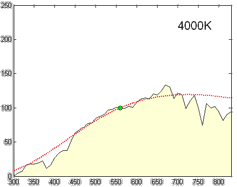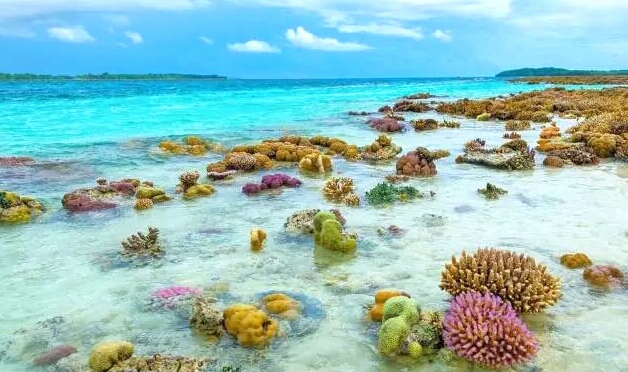High PAR is NOT always good. Once you reach a coral's photosaturation point, any further light is wasted, and once you reach the inhibition point, total photosynthetic activity (aka growth) decreases as the coral desperately tries to protect itself. More light does not mean more color, only for pigments that require specific intensities of specific spectra to express (which to be perfectly honest aren't many in number).High PAR numbers are good. High PAR numbers with high efficiency is better. I've said this before, Hi-CRI Whites tend to need a lot of extra LEDs to achieve the looks most want.
Some have posted that having a high CRI is better. A high CRI is important to consider when lighting an Art Museum. This will offer a more natural rendition of the colours compared to natural sunlight, not necessarily offer better looks.
Most of us prefer a 10-20K Look the chart below shows a decrease in the spectrums offered by Hi-CRI Whites as the Kelvin increases.

Bill
High CRI LEDs eliminate half a dozen others from arrays. Cool white needs violet, royal blue, blue, cyan, lime, amber, red-orange, red, and deep red. High-CRI whites need violet, royal blue, blue, cyan, lime. Less LEDs, less cost, less disco.
If you really think that CRI is not important over a reef tank, then why do your arrays not use RGB LEDs instead of cool white? You can make the light look identical to the eye and keep the color temperature higher.
Also, what in the world is that picture supposed to represent? Kelvin color temperature and spectrum don't really have anything to do with each other, as you can 'make' any color temperature with just a few key wavelengths and nothing in between.




















